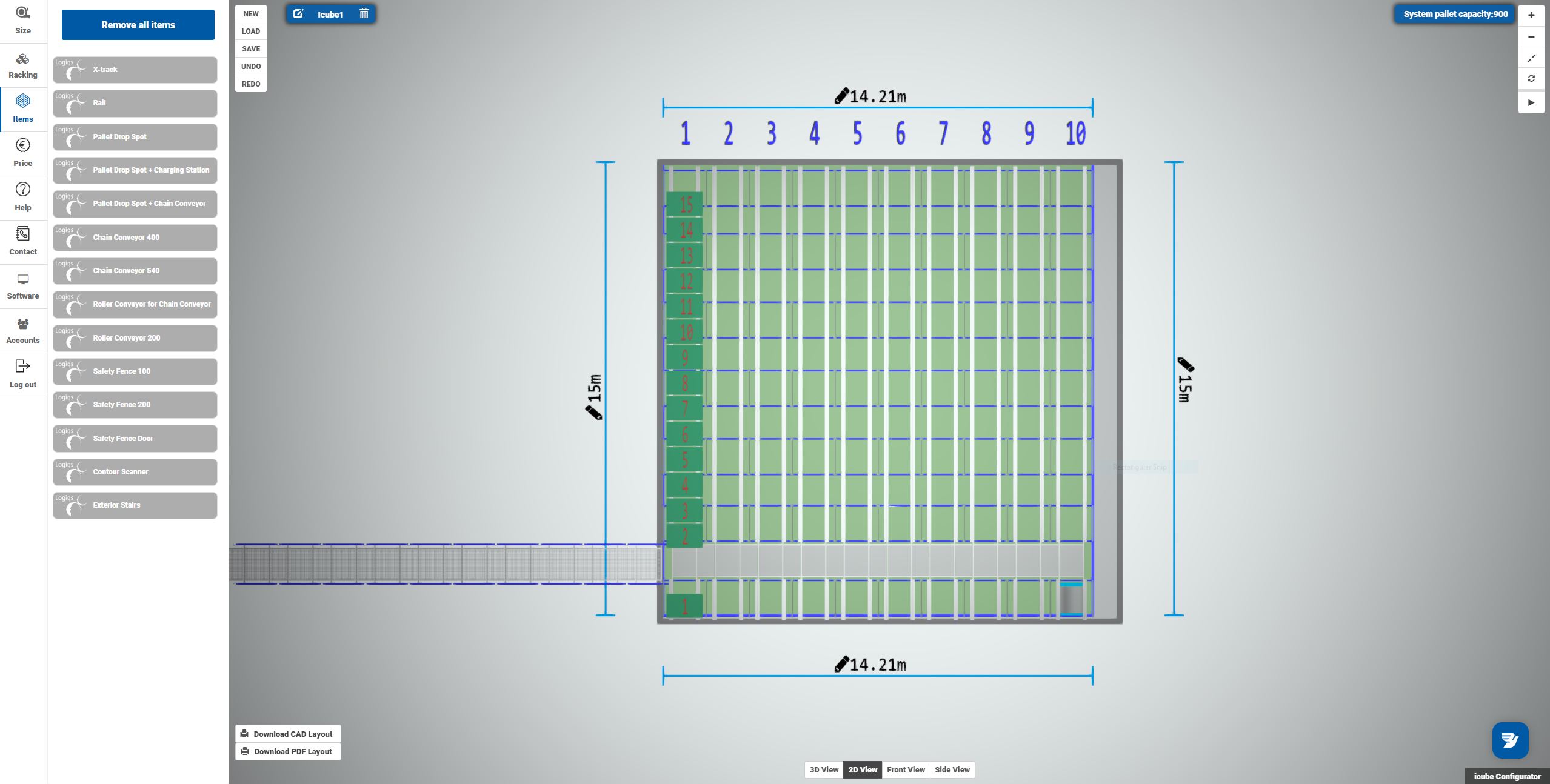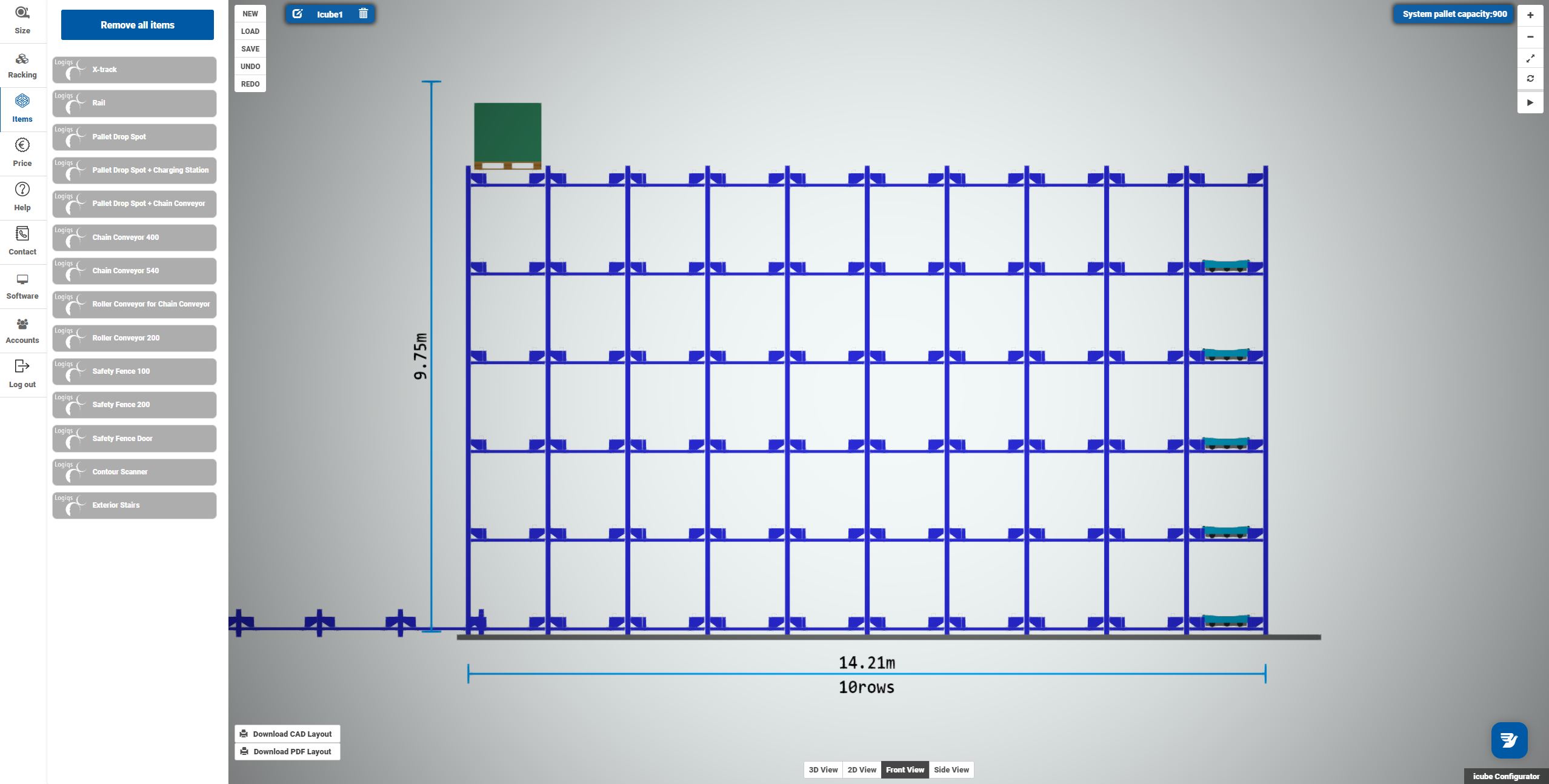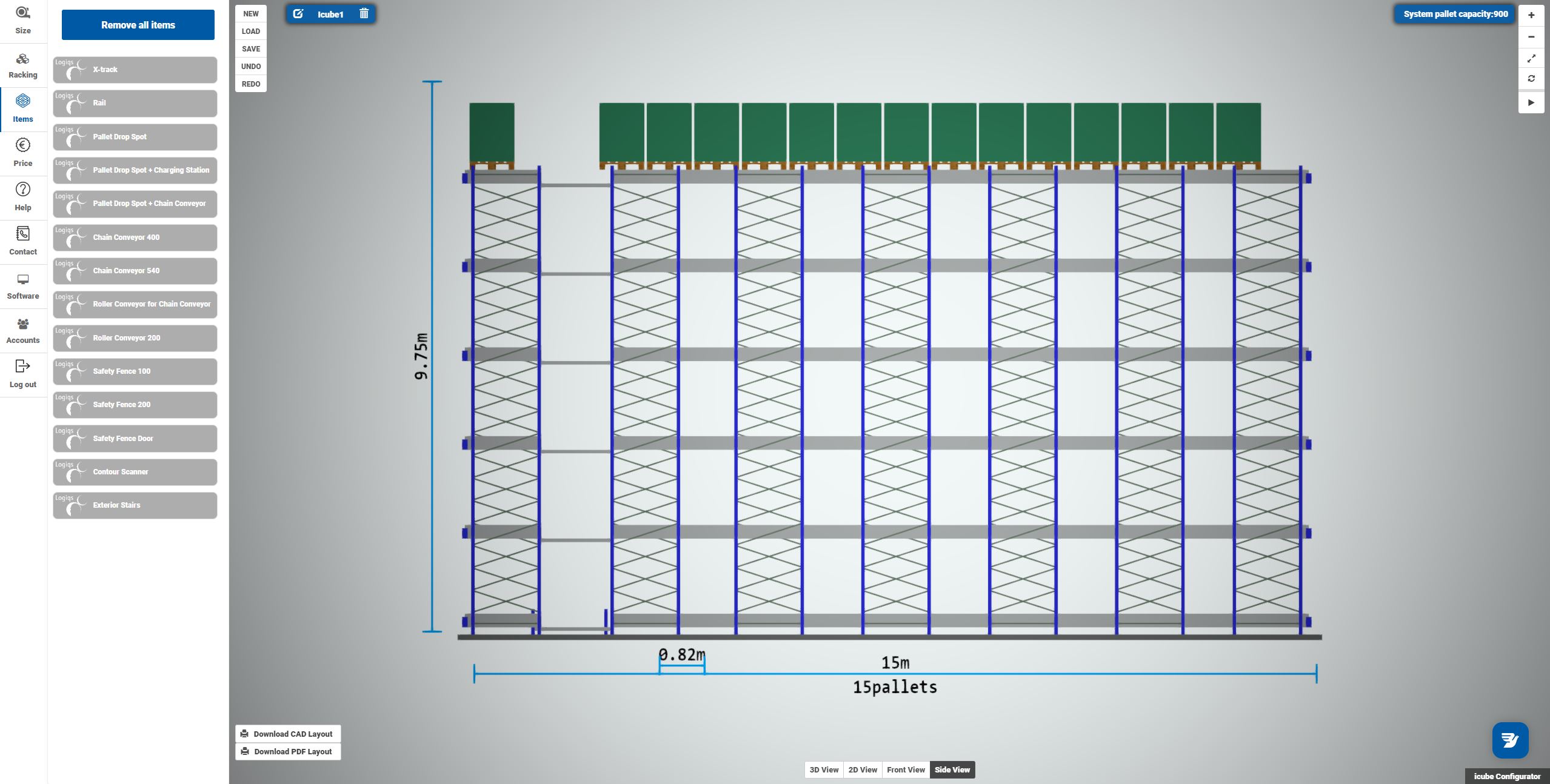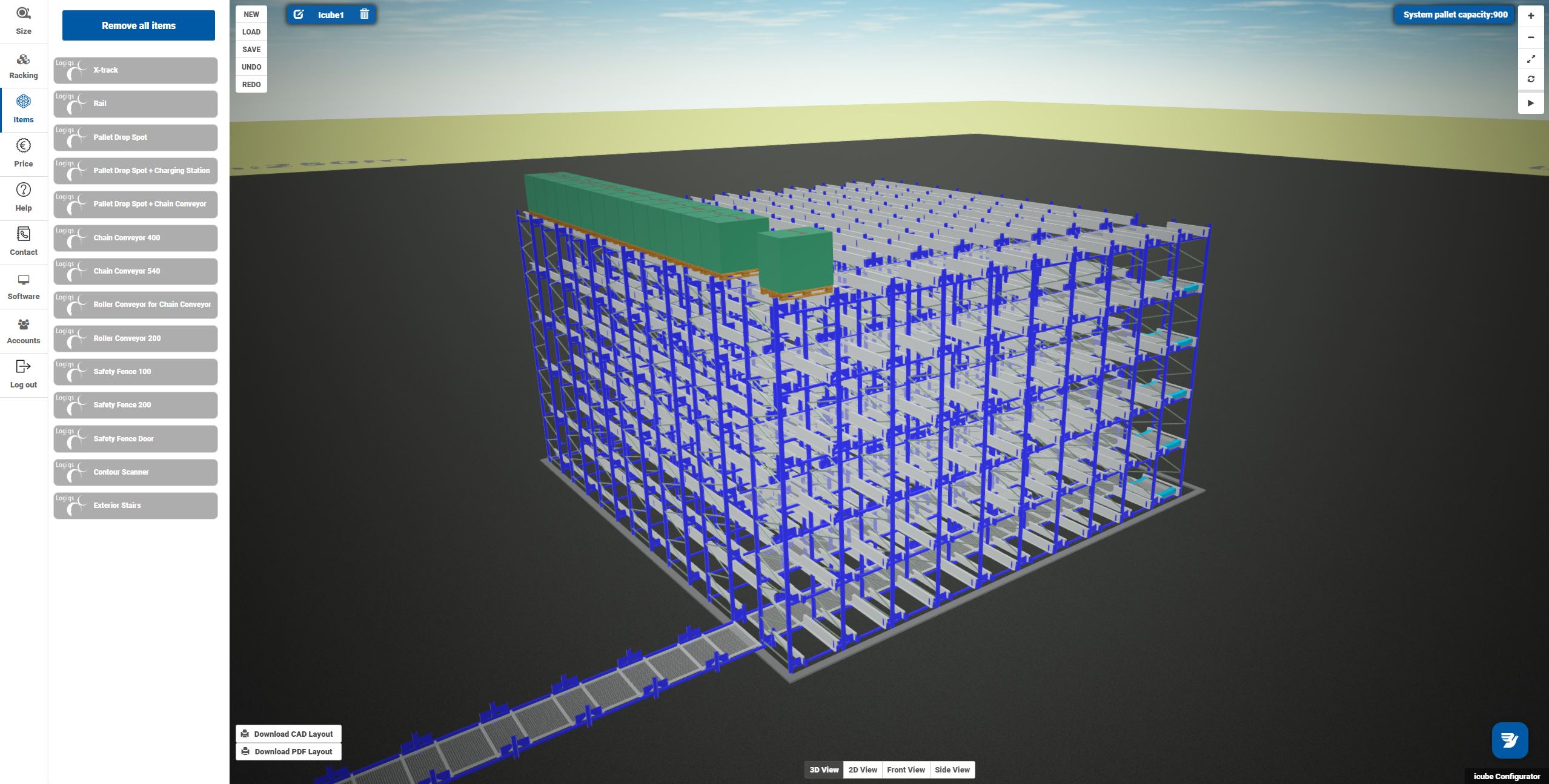The 3D product configurator – the most important step towards customer co-creation in retail
Engage and convert more leads
Immerse your customers in a world where their ideas come to life with our state-of-the-art 3D configurator.
Our technology puts the power of customization in their hands, allowing them to customize, modify and visualize your products and solutions with unparalleled detail.
From creating complex workfloor or factory layout, to changing colors or specifications to adjusting components, our configurator framework ensures they can tailor their perfect product online, anytime, anywhere – no plugins required.
Why Every Business Needs a 3D Configurator?
In an era where personalization is king, a 3D configurator isn’t just an option—it’s a necessity.
Whether you’re refining existing products or designing new ones from scratch, our solutions cater to every need.
Experience the transformative effect of real-time customization on your operations, enhancing everything from marketing to product development, and watch as your business reaps the long-term benefits.
Streamline Your Process, Enhance Your Vision
Before diving into the world of 3D configuration, let’s get your vision crystal clear. Understanding your customer’s desires and how to efficiently meet them is crucial.
Our approach begins with identifying key customization options that resonate with your audience, streamlining your offerings, and setting clear boundaries for bespoke requests. Our aim is to simplify the complex, ensuring your project starts on solid ground.
Focus on the company
For a clear vision, we recommend to clarify a few things before starting the project:
What to configure
- Which options are really important to the customer?
- Which options can best be left out?
- Where do we draw the line between the configurable product and a special?
- To what extent do we want to allow non-configurable ‘specials’?
Define the target group
- Who is the customer?
- What are the requirements and expectations according to the customization process ?
- Where is the customer being found (online vs. offline)?
- Knowing how and where to reach the customers
Start slim and stay flexible after launch
- The configurator is the main touchpoint to the customer.
- This guarantees no delay in the project planning and saves money from the very beginning.
Prototype
- in order to make the process decisions fast and efficient.
Track and analize customer data
- and stay curious
Focus on the user
The user-friendliness of the configurator is crucial. The following elements contribute to customer confidence and reduce purchase risks:
Visualisation
- Increases the customer’s confidence in the configured product.
- Can increase the conversion rate by 10-50 percent.
- The graphical possibilities of configurators vary greatly and, to a large extent, determine the cost price.
- Can range from easily-edited 2D images to photorealistic 3D renderings displayed in augmented reality.
Dynamic pricing
- Immediately shows customers how their choice affects the price, which avoids unpleasant surprises at the end of the configuration process.
Starting points for the configuration
- makes it easier to choose and reduces the customer’s choice stress.
- lets you subtly steer the customer in a desired direction.
Flexible navigation
- easy for the customer to go back and make adjustments.
- makes it simple to compare different options and uses a progress bar to show the customer how far they’ve got in the configuration process.
Benefits of a 3D Product Configurator
1. Empowers Marketing and Advertising
- Create more engaging online advertising
- Build virtual showrooms
- Provide customers the ability to personalize product catalogs
- Replace spendy traditional photography with photo-like digital images
- Increase the time users spend on company websites, engaging with the brand and its products
- Deliver an overall “wow” factor that impresses existing and potential customers
2. Drives Sales
- Provide more accurate price quotes
- Offer more chances to sell related products
- Increase in sales
- Decrease the time to final sale
- Allow for real-time interactions with potential customers
- Improve the quality of leads
- Set higher prices on some customized items
3. Elevates the Customer Experience
- Improve customer experience with products and brand
- Expand a customer’s ability to personalize products
- Increase a customer’s sense of control over their shopping process
- Provide customers a useful way to see all product details on a product through rotating and zooming
- Help customers to understand complex products better3Build confidence in potential customers and convert them to online buyers
4. Boosts Productivity
- Allow a company to automate workflows based on configuration orders
- Create more efficiencies when developing and using product images
- Decrease the number of product returns
- Provide a way for companies to reduce stock on hand
- Streamline customer service by eliminating misunderstandings and mistakes
5. Enhances Product Development
- Allow companies to test product concepts before spending money on production
- Increase speed to market on products
- Enable companies to manufacture on-demand easily for specific customers
- Help track customer behavior with an online configurator online, which aids product development
Possible features for your configurator:
-
User database
-
Drawing/model database
-
Fill-in fields for configuring the environment or product
-
Drag and drop possibilities for interacting with items
-
Virtual Reality compatibility
-
Automatic generation of 3D models
-
Automatic generation of CAD models
-
Automatic generation of sales offers
-
Statistics and CRM integration
What we do:
- Assign a dedicated account team
- Map your customer journey
- Define the user flow for the end-to-end customer experience
- Project planning
- Define roles and responsibilities
- Launch and post-launch tech support
- Training materials and strategies
- Promotion support and best practices
- Project risk assessment
- Manage business rules
- Provide knowledge base and training
What you do:
- Assign a Client Product Owner to prioritize scope, make decisions, review progress, and approve final deployment
- Assign a Client Product Specialist to provide information on content that will be created for the application and approve initial proof models for accuracy
- Assign a Client Technical Lead for integration requirements, providing access to APIs and assisting with deployments
Depending on the project, there may be other asks.
How the Consumer Can Use the Configurator
A few things affect a customer’s experience with a 3D product configurator online. These include:
Parametric Configuration
The consumer can change the design parameters of a product.
Nested Configuration
Consumers can personalize products within products. For example, a consumer may choose the size of a cubicle and then make more decisions about the desk and shelves.
Drag-and-drop
Gives the consumer the ability to position a product within a specified space.
Augmented Reality and Virtual Reality
Viewers might use this feature with drag-and-drop. With AR, consumers use a phone or tablet to visualize how a piece of furniture, for instance, might fit within a space in their living room. And with VR, large automations, buildings and other scenes can be made available to customers.
How the Consumer Views
the Configurator
Most configurators are for use online. You’ll want to see how customers will experience the configurator on phones as well as desktop and laptop computers. Sometimes consumers may view them on in-store touchscreens. If that’s your use case, see how they work in that environment.
Get in touch with us!
How to Get Up and Going with 3D Configurator project
Let's talk
Conduct initial discovery session to assess your current business challenges and project fit;
Define and scope
Size, sequence and carefully define all the elements of your project, from model creation requirements to deployment and on-going optimization;
Implement
Generate product components, materials and variants and integrating Threekit platform into your current tech stack;
Go live and sell more
Deploy product visuals and configuration to key endpoints: eCommerce site, social media, in-store and more;



